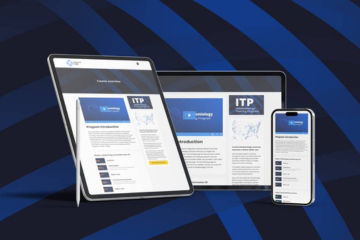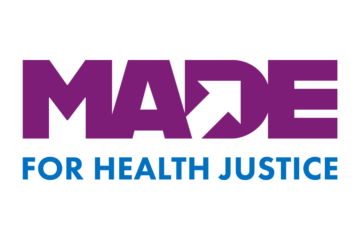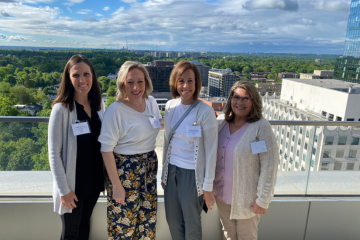
Jovonni Spinner, MPH, CHES, public health advisor with the U.S. Food and Drug Administration’s Office of Minority Health and Health Equity
Improving health among diverse populations is only possible with effective communications, tailored messaging, and careful consideration of communications methods. In the Office of Minority Health and Health Equity (OMHHE) at the Food and Drug Administration (FDA), we aim to create a world where health equity is a reality for all with a strong focus on reducing health disparities. During my time at OMHHE, I’ve been proud to be a part of a team that uses new digitally focused outreach strategies to disseminate information about health issues to diverse communities.
At the APHA Annual Meeting, our team will present our findings during a panel titled “Public Health Agencies’ Use of Innovative Communicative Approaches for Improving Public Health.” I hope you’ll join us on Nov. 4 from 1:00 to 2:30 pm. In the meantime, I want to share a few highlights of the trainings we hold for health professionals.
Our work addresses the intersection of health and culture. You might ask, what is “culture”? Culture encompasses the beliefs, customs, values, language, and practices that a group of people share. This can include things we can see like behaviors and practices, language, or food, for example. Other things like attitudes toward authority, religion, concept of family, and approaches to decision-making may not be easily visible or understood. But what does culture have to do with health?
Health and culture intertwine in many ways. For example, culture influences:
- how patients view health;
- patient and provider communication and shared decision-making;
- adoption of health promoting behaviors;
- how illness and pain are experienced or expressed;
- when and how one seeks medical attention; and
- the degree of understanding and compliance with treatment options.
All these examples showcase why it is important to appreciate and understand different cultures when designing health education materials, tools, and resources that aid individuals in making decisions about their health for themselves and their family.
Our office focuses on providing education and resources to racial and ethnic minority groups because we know they may have difficulty accessing or using health education materials due to culture and language barriers. So, not only is it imperative to have culturally and linguistically tailored health education materials, but we also need to be savvy in our strategies to disseminate these materials. With the belief that education starts at home, the OMHHE developed an internal training for FDA staff to address these issues and ensure that we are being culturally aware to meet the needs of our diverse consumers.
It is important to appreciate and understand different cultures when designing health education materials, tools, and resources that aid individuals in making decisions about their health for themselves and their family.
Our training, “Communicating with Confidence: Strategies to Create Effective Communications for Diverse Audiences” aims to increase knowledge, attitudes, and behaviors around defining cultural competency and its importance; role of cultural competency in determining health communication sources, messages, and channels; and creating a culturally competent strategy and plan of action for staff to complete their work. We want to make sure we understand the impact that culture has on the health of our communities so that we can competently communicate complex health information in a manner that diverse groups can understand and act on. During the training, participants dialogue in a safe space to explore what it means to be culturally competent and how implicit biases can impede our work, as well as gaining skills to improve our ability to communicate with diverse audiences while being aware and sensitive to their cultural needs.
Cultural competency is a continuum that ebbs and flows. Becoming competent is highly dependent on the individual to recognize cultural differences and seek advice from diverse groups to learn about these differences with the hopes that one can move towards cultural proficiency. Which, at that point, they can be reflective and implement changes to improve culturally tailored services. This is the intent of our training, and based on initial feedback, we were highly successful! Participants shared that this was a one-of-a-kind interactive training experience that really helped shape their perceptions of how culture impacts health and steps they can take to move toward becoming culturally proficient.
To bridge the health divide, we must not shy away from addressing culture as a factor in improving health outcomes. This training is one of many strategies we employ to create a world where health equity is a reality. We aim to purposefully remove barriers to ensure our communities have the best quality, credible health information available. We look forward to sharing more information during our presentation at the American Public Health Association annual meeting.
Jovonni Spinner, MPH, CHES, is a public health advisor with the U.S. Food and Drug Administration’s Office of Minority Health and Health Equity. She is a member of the first class of 40 Under 40 in Public Health. This post was first published on the APHA Annual Meeting blog as part of the “Fresh Perspectives” series, presented by the de Beaumont Foundation.




